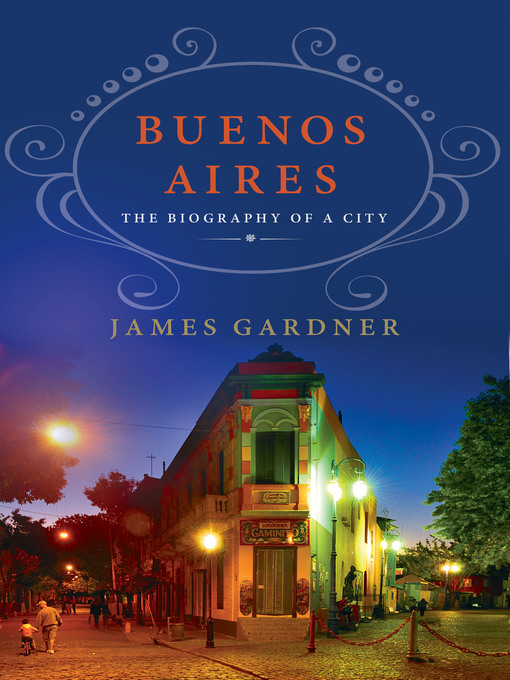Buenos Aires, Argentina, recognized for its European-style architecture and lively theater scene, is a truly special place. The second-largest city in South America, it has been the home of such renowned cultural and historical figures as Jorge Luis Borges and Astor Piazzola, Che Guevara and Eva Peron. Like every truly great city, New York, London and Prague; Buenos Aires is its own universe, with its own center of gravity, its own scents and flavors, its own architectural signature-in short, its own way of being. From San Telmo's oak-paneled restaurants and brightly tiled apothecaries from 1900, and the phantasmagoric Beaux Arts palaces along Avenida Alvear and Plaza San Martin, to the parks of Palermo and the bustling bars and cafes along Corrientes and LaValle, Buenos Aires is steeped in exotic culture and history.
In Buenos Aires, Art and culture critic James Gardner offers a colorful biography of the "Paris of the South," from its origins and time as a colonial city, through its Golden age, the rise of Peron, and the Falklands War, to the present day. With entertaining asides about art, architecture, literature, food and dance, as well as local customs and colorful personalities, this is a rich and unique historical narrative of Buenos Aires.
-
Creators
-
Publisher
-
Release date
December 1, 2015 -
Formats
-
Kindle Book
-
OverDrive Read
- ISBN: 9781466879034
- File size: 19585 KB
-
EPUB ebook
- ISBN: 9781466879034
- File size: 19585 KB
-
-
Languages
- English
-
Reviews
-
Kirkus
October 1, 2015
A freelance journalist specializing in architecture debuts with a general architectural history of one of the world's most intriguing cities. Gardner, once the art critic for the New York Post, first visited Buenos Aires in 1999 and fell in love with the architectural diversity of the city. He acknowledges that his is not a scholarly approach, but it's evident throughout that he has done a scholar's homework. The author does some expected things]e.g., writing about the geographical and geological history of the pampas and a bit about the political history of the city, which both caused and is reflected by many of the city's structures. Gardner notes that the city's flatness encouraged the earliest settlers to lay out a strict grid with wide streets, an outline that remains. Proceeding chronologically, the author includes numerous photographs (readers will wish for more]and for city maps, which are oddly absent). His approach is generally more expository that judgmental, though he does not hesitate to praise the beautiful and disdain the less so, and he reserves some special venom for the historical period (last century) when dictators ruled and misruled. He necessarily deals with some economic history, as well, noting the slave markets from centuries past and showing how the country's economy accelerated when refrigerated shipping made possible the lucrative trade in cattle. He also shows Argentina and its capital as hosts to myriads of immigrants. Although the author discusses some architectural terminology]beaux-arts, modernism, and the brutalist style]he is careful to explain and to give examples. At one point, commenting on the architectural beauty of much of the city, he comments that even the brothels were stylish. He describes waterfront development, the arrival of the railroad, and the building of the marginally necessary subway. A genial historical tour conducted by an affectionate docent with a keen eye and an admiring though sometimes-admonitory message.COPYRIGHT(2015) Kirkus Reviews, ALL RIGHTS RESERVED.
-
Loading
Why is availability limited?
×Availability can change throughout the month based on the library's budget. You can still place a hold on the title, and your hold will be automatically filled as soon as the title is available again.
The Kindle Book format for this title is not supported on:
×Read-along ebook
×The OverDrive Read format of this ebook has professional narration that plays while you read in your browser. Learn more here.

